Notwithstanding the cheesy album covers, Candela explores the rich and idiocyncratic story of Latin Music in London to celebrate LaLinea’s 10th anniversary festival this year.
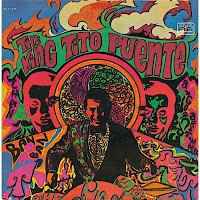
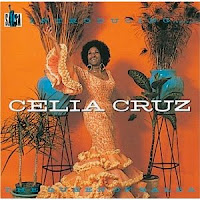
It was 1981. I mostly remember the legs of dark, glossy-haired, poncho-wearing folk, as I squeezed through them to get to the front. There, I had full view of Gilberto Gil as he sung his acoustic version of Bob Marley’s No Woman No Cry. Perhaps it was the playful, sweet percussive serenity of his music, its simplicity and richness, or the sheer emotion it generated in the room. Whatever it was, it blew this nine-year-old away and I still thank the flaky babysitter, who ever she was, who failed to turn up that night, forcing my parents to sneak me into the Hammersmith Palais on a cold winter’s night. It was my first ever concert and it cemented my love for Latin Music forever.
Many would be surprised to know how long Latin Music has entranced audiences in the UK. Back in the 1940s Cuban bandleader Don Marino Barreto made his name playing to pilots on the Salisbury Plain during the Battle of Britain. After the war, Barreto passed his band over to Edmundo Ros who became the most successful musician in Britain, across the board.
The 1940s and 1950s and the Curious Case of a One Man Latin Allure
Arriving from Caracas, Venezuela, Ros became a sensation after Parlophone released Los Hijos de Buda in 1941. He went on to have several hits, including Rhythms of the South and Arriba and his albums sold briskly. His biggest hit, The Wedding Samba, even crossed over to the U.S. Top Five, selling three million copies in the process.
The charismatic Latino attracted the cream of London society to his appearances at the lavish Coconut Grove on Regent Street. The national headlines he made, when a defendant in a high-profile divorce case implicated him as a catalyst for his marriage’s demise, only made him more popular. He even taught then-Princess Elizabeth and her sister Princess Margaret to dance.
He owned three nightclubs in the West End, including the Coconut Grove site which he bought and renamed Edmundo Ros’ Dinner and Supper Club, and was a DJ on Radio 2. His radio programmes became the ‘housewives choice’, as he tailored his Latin big band sound to the English ear by emphasising melody over rhythm. The cool society scene created by Barreto and Ros, opened the door for other Afro-Caribbean immigrant artists such as Rita Cann, the distinguished pianist who formed her own Latin Band in the 1940s. Ros was awarded the Order of the British Empire in the 2000 New Year’s Honours List.
Playing to the stereotype of Latin cheese: the popular Edmundo Ros
The 1970s and 1980s and the Music of Latin Solidarity
During the 1960s, the popularity of Latin Music gave way to Beatlemania and the ascent of English pop. In the early 1970s, however, it came back in a different form, when political refugees started to flood in from the wave of dictatorships sweeping through Latin America, starting with the coup that overthrew socialist President Allende in Chile in 1973 to the US interventions in Central America of the 1980s. With the political migrants, many of whom were creative types and musicians, you had a developing interest in the Nueva Trova and Canción de Protesta (protest music) of the likes of Argentina’s Mercedes Sosa, and Cuba’s Silvio Rodriguez. The exiled years of Brazilian legends Gilberto Gil and Caetano Veloso in West London added much allure to this cool London sub-culture.
In these de-politicized times, it is difficult to imagine political Latin music having widespread appeal, yet Andy Wood, La Linea promoter who started his career putting on concerts for the Nicaragua Solidarity Campaign describes a buzzing scene that tapped into the broader politically activity in Britain at the time. “The Nicaragua Campaign had thirty full time staff and brought loads of artists. We had support from the Greater London Council (run by ‘Red Ken’ Livingstone) who helped bring the likes of Rubén Blades, Inti-illimani and Silvio Rodriguez. This was before the dance class boom. People enjoyed dancing to live salsa, without worrying whether they were dancing on the one or the two.”
The Impact of Latino Immigrant Culture
Accompanying the influx of political refugees was an even bigger wave of economic migrants in the late 1970s, mostly from Colombia, fleeing both the political and economic terrors of a 40-year long civil war. A second Colombian wave came with the further economic slump caused by the busting of the drug cartels in the late 1980s. Today, Britain has the world’s third largest Colombian Diaspora, after the US and Spain.
Out of the spotlight, the Colombian community, known to be great salsa lovers, built their own thriving music scene in London. The Guardian writer Richard Williams remembers the Monday night in 1975 when a grungy punk-rocker pub, acted as stage for the first salsa band to across the Atlantic. A 29-year-old Héctor Lavoe, already a legend in the US and South America, played to a scrawny London pub crowd and, according to Williams “for a couple of hours made its seem like the only place to be.”
In the years to come, the sheer numbers of Latinos in London and their musical nostalgia ensured an audience for some of the salsa greats who came to play in London year after year through the 1980s– Colombia’s Grupo Niche, Gilberto Santa Rosa and El Gran Combo de Puerto Rico, Willie Colón and Venezuela’s legendary Oscar de Leon. to name a few.
The Colombians in London certainly played a big part in kicking off the Salsa club phenomenon. For, as well filling their own clubs, their party spirit spilled over into the mainstream Latin themed bars that were springing up all over London offering salsa classes. Paul Young, who jumped on the trend by congregating thousands of salsa fans in weekend Congresses says, “a lot of those people were introduced to Latin music and artists such as Tito Puente, purely through the dance.”
The allure of Latin rhythms allowed many British musicians such as pianist Alex Wilson and Robin Jones of Salsa King or DJs Snowboy and Gilles Peterson, to make a living off their passion for Latin music. But the influence hasn’t all been one way. You can hear the appreciation of English pop in the much of the music of Gilberto Gil and Caetano Veloso, from London, London Veloso’s melodic tribute to the city to Gil’s stunning Brazilianisation of The Beatles’ Hello, Goodbye. Other migrating Latinos have infiltrated the English music establishment behind the scenes: Percussionist Roberto Pla, who started out with Boney M.,Venezuelan-Argentine Stereophonics drummer Javier Weyler or Roxy Music’s Phil Manzanera from Colombia. As solo artists all have fused Latin rhythms with British pop and electronic styles.
The ‘Latin Boom’ of the 1990s
The years of Canción de Protesta and the Latino immigrant culture bubbling under London’s surface, coincided with the advent of World Music which was being promoted by mainstream music magazines such as NME. The influential music weekly displayed artists such as Bhundu Boys and Kid Creole and the Coconuts on the cover for the first time in Britain.
With his stream of chart successes in the UK such as Annie, I’m Not Your Daddy, Kid Creole in particular became hugely influential in providing the Anglo audience with the bridge into Latin Music, says Andy Wood, “Kid Creole invented World Music before anyone had a name for it. By synthesizing Latin and Caribbean music for a wider audience, I would say he did what Edmundo Ros did, but for a different generation.”
This opening of the doors, together with the revival of traditional Cuban music, according to Wood, prepared the ground for the success of Buena Vista Social Club in the nineties. “The popularity of the Buena Vista artists was not the product of some big marketing master plan, as some people think,” says Nick Gold, executive producer of the Buena Vista series, “but the live performances, great reviews and word of mouth of an already receptive audience. The Wim Wenders film then made it into an international phenomenon.”
Then, of course, came the invasion of the commercial superstars via the US – Gloria Estevan, Ricky Martin, and Shakira – who provided the Saturday night anthems of London’s now prolific Latin-flavoured venues such as Bar Salsa and Havana and added to what the Evening Standard described as “The Latin Boom.”
This English and London Latino appreciation for a common sound culminated in the Latin mega-festivals that began with Salsa 2000 in Battersea Park, which had Celia Cruz, Oscar de Leon, Ruben Blades and Alberto ‘El Canario’ sharing the stage. This was followed by the launch of La Linea, which celebrates its 10th anniversary this year and Clapham Common’s Latin Splash, which drew 9,000 people in 2005.
The Future of Latin Music in London
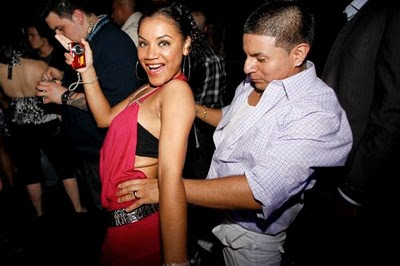
The new generation: club culture taking Latin Music forward in the UK
The impact of the estimated 700,000 strong Latin American community (mostly in London) can been and in the many established yearly music festivals – Carnaval del Pueblo, Colombianamente and Colombiage – that are now part of London life.
The Latin music of choice has changed, however. “We always used to open La Linea with a salsa band,” says Wood. “But La Linea is about New Latin Music and sadly there is not a lot new happening in Salsa.”
The great bands such as Cuba’s Los Van Van that are able to reinvent themselves through the generations will always fill venues, but there is more interest now in fusion groups such as the Cuban Hip hop-timba project Orishas, or the electronic tango outfits Bajo Fondo and Gotan Project.
The new, however, still sits comfortablu side by side with the appreciation for traditional orchestras. Andy Wood remembers the double-Cuban bill he put on with Orishas and the legendary Orchestra Aragaon, which was like a passing of the baton.” When Orishas went on first, Orchestra Aragon band leader Rafael was looking distinctly nervous when he looked out to see all the girls who were throwing themselves at Orishas and said this doesn’t look like our audience. But in fact when they went on the same girls were dancing just the same in the second half, only they weren’t passing them their numbers.”
Meanwhile, a new Latin movement that London can call its very own is being created by the first generation of Latino-Brits, now coming of age and making their mark on London, mostly noticeably on the Club scene. Their music of choice is Urban Latin with its creative fusions of Afro-Latin genres Bachata, Bomba, Plena with Salsa, Hip–hop and House. The big names Tego Calderón, Calle 13, and Pitbull have already played in London to audiences that are the most eclectic yet. At La Bomba, London’s biggest Latin Urban party Jamaican, Asian, Arab as well as white and Latino Londoners. “Whereas the salsa scene began to alienate people with its obsessive focus on dance technique,” says La Bomba promoter DJ Joe Luis. ”This scene brings it back to the music and culture of the Spanish Caribbean. Its recreating that inclusive atmosphere and making it even more part of the ever broadening spectrum of British music culture.”

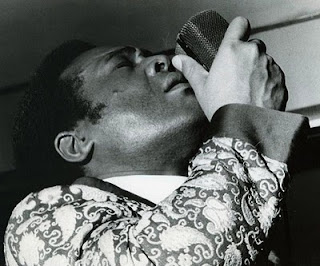
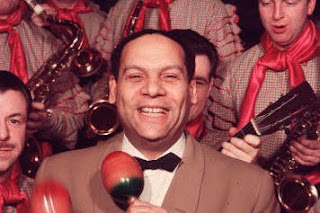
Recent Comments